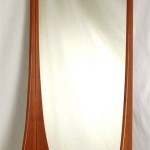How to Mirror MacBook Air to Apple TV
Mirroring a MacBook Air's display to an Apple TV offers a convenient way to share presentations, enjoy media content on a larger screen, or extend the workspace. This process leverages AirPlay, Apple's proprietary wireless streaming technology, allowing for seamless screen duplication or extension. Several methods exist for establishing this connection, each catering to slightly different needs and preferences.
Using the Control Center:
The Control Center in macOS provides quick access to AirPlay settings. To initiate screen mirroring, click the Control Center icon in the menu bar. Locate the "Screen Mirroring" icon. A list of available AirPlay devices within range will appear. Select the desired Apple TV from the list.If a passcode appears on the Apple TV screen, enter this code on the MacBook Air to establish the connection.
This security measure helps prevent unauthorized access to the Apple TV.Once connected, the MacBook Air's display will be mirrored on the television connected to the Apple TV. Users can then control what is displayed on the larger screen directly from the MacBook Air. Adjusting resolution or extending the display instead of mirroring is also possible through the same Control Center menu.
Mirroring from the System Preferences:
An alternative approach involves using the System Preferences. Open System Preferences, typically located in the Dock or accessible through the Apple menu. Within System Preferences, select "Displays." This section allows users to manage various display settings, including AirPlay mirroring.The "AirPlay Display" dropdown menu will list available Apple TVs. Choose the desired Apple TV to initiate the mirroring process. Similar to the Control Center method, a passcode might be required to confirm the connection.
Within the Displays preferences, users can also configure display settings such as resolution and color profile. Choosing "Extend Display" rather than "Mirror Display" will allow the Apple TV's connected display to act as a secondary monitor, expanding the workspace.
Utilizing Menu Bar Shortcuts:
For frequent AirPlay users, enabling the mirroring option directly in the menu bar can streamline the process. This can be achieved through the Displays section within System Preferences. Check the box labeled "Show mirroring options in the menu bar when available." This will place a convenient shortcut in the menu bar for quick access to AirPlay devices and mirroring settings.Troubleshooting Connection Issues:
Occasionally, users may encounter difficulties establishing or maintaining an AirPlay connection. Several factors can contribute to these issues, including network connectivity, software versions, and physical obstructions.Network Connectivity:
Ensure both the MacBook Air and the Apple TV are connected to the same Wi-Fi network. A strong and stable network connection is crucial for smooth AirPlay performance. Check the network settings on both devices and restart the router if necessary.Software Updates:
Outdated software can sometimes cause compatibility issues. Verify that both the MacBook Air and the Apple TV are running the latest versions of their respective operating systems. Software updates often include bug fixes and performance improvements that can resolve connection problems.Physical Obstructions:
Physical barriers between the MacBook Air and the Apple TV can interfere with the wireless signal. Minimize obstructions and ensure a clear line of sight, if possible, for optimal performance.Restarting Devices:
A simple restart of both the MacBook Air and the Apple TV can often resolve temporary glitches that may be hindering the connection. This can refresh network connections and clear cached data, potentially resolving the issue.Checking Firewall Settings:
In some cases, firewall settings on the MacBook Air might be blocking the AirPlay connection. Review the firewall settings in System Preferences and ensure that AirPlay is allowed to communicate through the firewall.Optimizing Performance:
While mirroring is generally seamless, certain factors can influence performance. For instance, streaming high-bandwidth content, like 4K video, can be demanding on the network. Reducing the resolution of the mirrored display or closing unnecessary applications on the MacBook Air can improve performance in such scenarios.Stopping Screen Mirroring:
Disconnecting the mirrored display is straightforward. Click the Control Center icon in the menu bar, select "Screen Mirroring," and then choose "Stop Mirroring." Alternatively, users can disconnect through the Displays section in System Preferences or by using the AirPlay icon in the menu bar, if enabled.By understanding these methods and troubleshooting tips, users can leverage AirPlay to effectively mirror their MacBook Air to an Apple TV for a variety of purposes, from presentations and entertainment to enhanced productivity.

How To Mirror A Mac An Apple Tv Using Airplay

Use Airplay To Stream What S On Your Mac An Hdtv Apple Support

How To Mirror A Mac Tv Osxdaily

Stream Audio And From Your Mac With Airplay Apple Support Vn

How To Use Apple Airplay Mirror Your Iphone Mac Screen On Tv Roku And More Cnet

How To Mirror A Mac Tv Osxdaily

How To Mirror Mac Macbook And Pro Grundig Tv 3 Steps

Use Airplay To Connect A Projector Tv Or Display Mac Support Blake Information Services

Stream Audio And From Your Mac With Airplay Apple Support Vn

How To Screen Mirror Mac Samsung Tv Step By Guide








